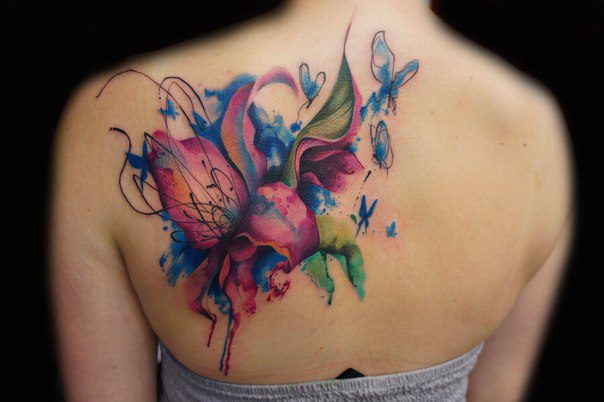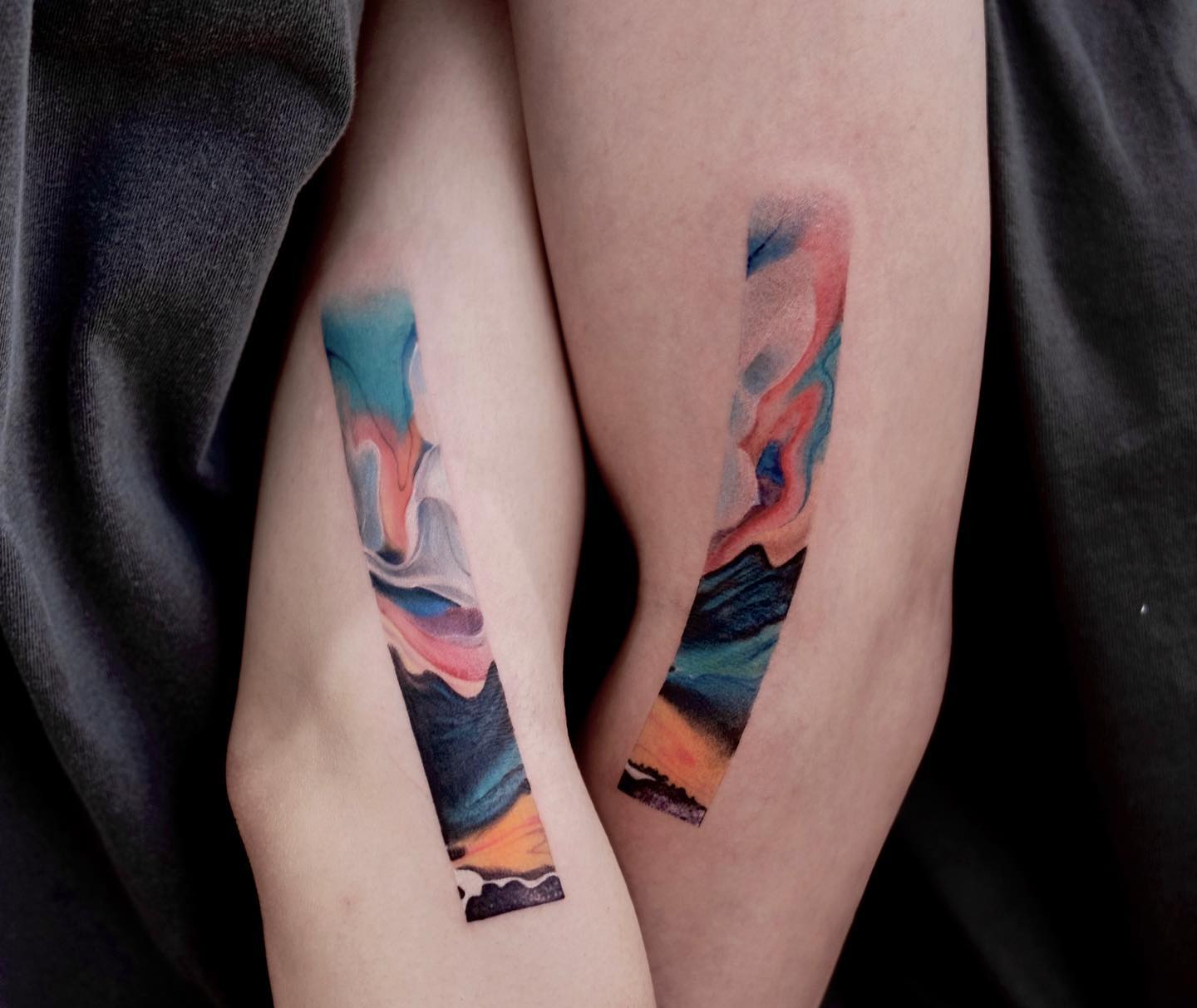
Style Guide: Watercolor Tattoos
- Мanagement
- Styles
- Watercolor

In this article, we explore the origins, technique, and aging of watercolor tattoo style pieces.
- Getting real watercolor tattoos inspired is an ancient practice involving the use of natural pigments found in the earth.
- Many of the skills that artists use are actually used by watercolorists as well, as the medium and technique transfers quite easily onto the skin.
- Artistic style, watercolor tattoos can be splashes of color, reproductions of real paintings from the past, images of flowers and animals, etc.
- The lack of black outline has caused some concern about the aging of watercolor tattoos, which is why many tattoo artists use thin black lines to solve this problem. Others claim it's not a problem at all.
- The origins of watercolor tattoos
- Watercolor tattoo techniques
- Problems of aging
Like the fine art that inspired his stylistic creation, watercolor tattoos are usually a beautiful, organic, graceful play of color that uses skin as a canvas. This trend, founded relatively recently, has since experienced an upsurge thanks to artists who continue to push aesthetics, methods and concepts to new heights of ingenuity. In this guide, we explore the origins and techniques of the watercolor style.
We are also investigating the problem of healing and aging of liquid paints.
The origins of watercolor tattoos
The actual type of painting that watercolor tattoos come from is practically primitive. In ancient times, all painting pigments were made from organic materials, including terrestrial substances such as plants, minerals, animals, charred bones, and the like. The first examples of watercolor painting can actually be traced back to Paleolithic cave paintings, however the Egyptian papyrus scrolls are often considered to be the first refined use of this medium. Later used for illuminated manuscripts in the Middle Ages, watercolor did not find permanent and widespread use until the Renaissance.
Unsurprisingly, due to the natural compounds of watercolor pigments, it is well suited for natural illustrations. The paints were relatively easy to use, very versatile and well tolerated. While this may seem completely unrelated to the contemporary style of watercolor tattooing, the techniques and stylistic approaches are very similar to many of the artists working in that particular era. Artists such as Thomas Gainsborough, J. M. W. Turner, John James Audubon, Thomas Eakins, John Singer Sargent, and Eugene Delacroix are just a few of the artists who used watercolor and propelled it to a reputation as a serious artistic medium. Many of the skills that these fine artists used are actually used by watercolor masters as well, as the medium and technique is quite easy to transfer to the skin.
Flash tattoos are also often painted with watercolor as well as gouache, a more opaque form of the aforementioned paint. The watercolor tattoos we see today are created using a bright and expansive palette of colors, but this has not always been the case. Restrictions on the primary colors of red, blue, yellow and green were often the only old school tattoo artists to work with at a time when flash and modern tattooing were taking hold. These pigments age best not only on paper, but also on skin.
In the late 19th and early 20th century, the flash tattoo spread throughout the world through merchants, sailors, and artists. There was a huge demand for new and inventive designs, as well as an opportunity for tattoo artists to share their portfolio. Watercolor flash was the quickest and easiest way to do this, and many of the flash sheets from those eras still exist and inspire the watercolor tattoos we see today.
Watercolor tattoo techniques
Although most tattoo artists have used a watercolor medium to paint their flares, the stylistic differences between traditional artists and watercolor artists are immediately recognizable. Of course, the affectation and bias of each artist will naturally determine his personal aesthetic, but the use of a base, or lack of it, differs between the two styles.
Problems of aging
Whether freehand, abstract, botanical images or perfect imitations of famous paintings, watercolor tattooists rely on the use of color and fluid technique in their work. However, the lack of black is a concern for many tattoo artists, who claim that the use of black outlines prevents the color pigments from spreading and dispersing. The main problem with short watercolor tattoos is that they are said to not hold their shape and definition without that basic black outline.
Some watercolorists have settled the dispute by simply using the black "skeleton" as a "touch-up" to help keep the colors in place. Others argue that touching up a tattoo is perfectly normal for any tattoo, including watercolor pieces, and that it really isn't a problem.
The reality is that traditional tattooists use black outline in their work because the ink is carbon based. Once injected into the skin, the black carbon ink becomes a "dam" or wall to keep the color in place, so the problem of ink spreading is not an issue and the color stays in place. Without that black carbon wall, the colors used in watercolor tattoo style tend to fade and dissipate faster than colors applied traditionally.
In the end, it's a matter of personal choice and what the collector wants.
Regardless of the argument, the beauty of aesthetics and design is often hard to ignore.
Based on the most ancient and sophisticated fine art used by famous artists and illustrators for centuries, watercolor tattoos continue a tradition most often seen in galleries and museums. This is often what tattoo collectors are looking for; using his skin as a walking canvas for highly skilled artisans.
Remarkable in beauty and elegance, often highlighting the best the natural world has to offer, watercolor tattoos are a trend that is unlikely to see an end anytime soon.
Leave a Reply